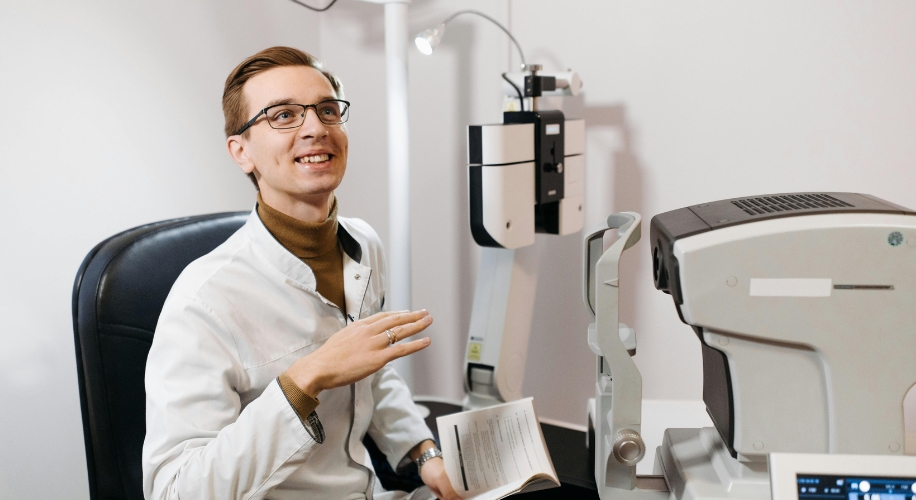A Comprehensive Guide to OTC Eye Drops
- BY Dr. Steven Liem
- IN Eye Health
Taking care of your eyes is essential for maintaining good vision and overall eye health. Over-the-counter (OTC) eye drops can be a convenient and effective way to address various eye concerns, from dryness to allergies. Since choosing from the different types of OTC eye drops can be confusing, let’s explore the main categories to help you make an informed choice.
Photo by cottonbro studio
Lubricating Eye Drops
Dry eyes are a common issue for many people, caused by factors like aging, environmental conditions, or prolonged screen time. Lubricating eye drops, also known as artificial tears, help relieve dryness and provide moisture to the eyes. These drops mimic natural tears and come in various formulations:
- Preservative-free: Ideal for those with sensitive eyes or who need to use drops frequently. They come in single-dose vials to prevent contamination and irritation.
- Regular: These contain preservatives to prevent bacterial growth once the bottle is opened. They are suitable for occasional use and may be more cost-effective for some users.
- Gel: These drops typically have a thicker, gel-like consistency and provide prolonged moisture and lubrication. Gel eye drops are beneficial for individuals with chronic dry eye symptoms or those who require sustained relief during the night or throughout the day.
Allergy Eye Drops
Seasonal allergies can cause redness, itching, and watering of the eyes due to exposure to allergens like pollen or pet dander. Allergy eye drops, also known as antihistamine eye drops, can provide relief by reducing inflammation and blocking histamines:
- Antihistamine drops: They relieve itching and redness by blocking histamine receptors in the eyes, and work best for providing immediate relief.
- Mast cell stabilizers: These prevent the release of histamines and other chemicals that cause allergic reactions. Use these drops to prevent symptoms from seasonal allergies.
- Combination drops: Some products combine antihistamines with decongestants or lubricants for comprehensive allergy relief.
Photo by Andrea Piacquadio
Redness-Relieving Eye Drops
Eye redness can be caused by minor irritations, allergies, or tiredness. Redness-relieving eye drops work by constricting blood vessels in the eyes, reducing the appearance of redness:
- Vasoconstrictors: These drops work quickly to reduce redness but can cause rebound redness with prolonged use. They should not be used on a regular basis.
Contact Lens Eye Drops
Contact lens wearers may experience discomfort or dryness due to prolonged use. Specialized eye drops for contact lenses can help maintain comfort and clarity:
- Rewetting drops: These help lubricate and hydrate contact lenses during wear, reducing dryness and discomfort.
- Multi-purpose solutions: These serve as a rinse, disinfectant, and storage solution for contact lenses.
Choosing the Right Eye Drops
When selecting OTC eye drops, consider the following factors:
- Ingredients: Check for active ingredients that target your specific eye issue.
- Formulation: Preservative-free drops are gentler for frequent use.
- Usage: Follow instructions carefully regarding dosage and frequency.

Photo by Pavel Danilyuk
Whether you need relief from dryness, allergies, redness, or discomfort while wearing contact lenses, there’s a suitable OTC eye drop to meet your needs. By understanding the different types of eye drops, you can effectively manage common eye symptoms. However, if you have persistent eye symptoms or are unsure which drops to use, we recommend consulting an eye care professional.



